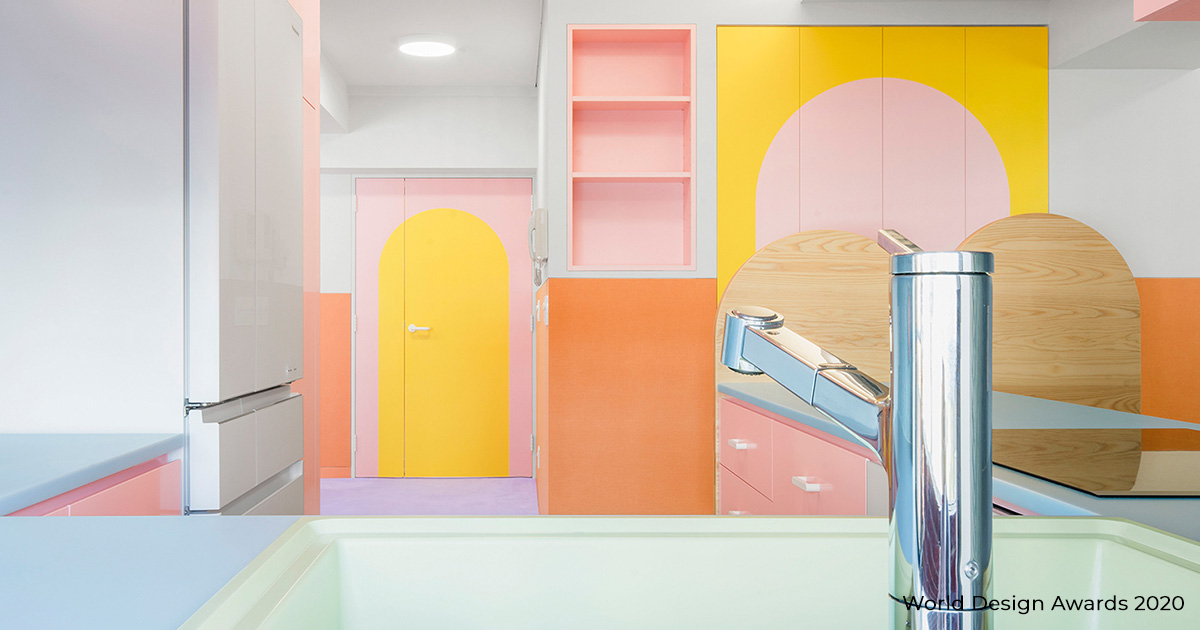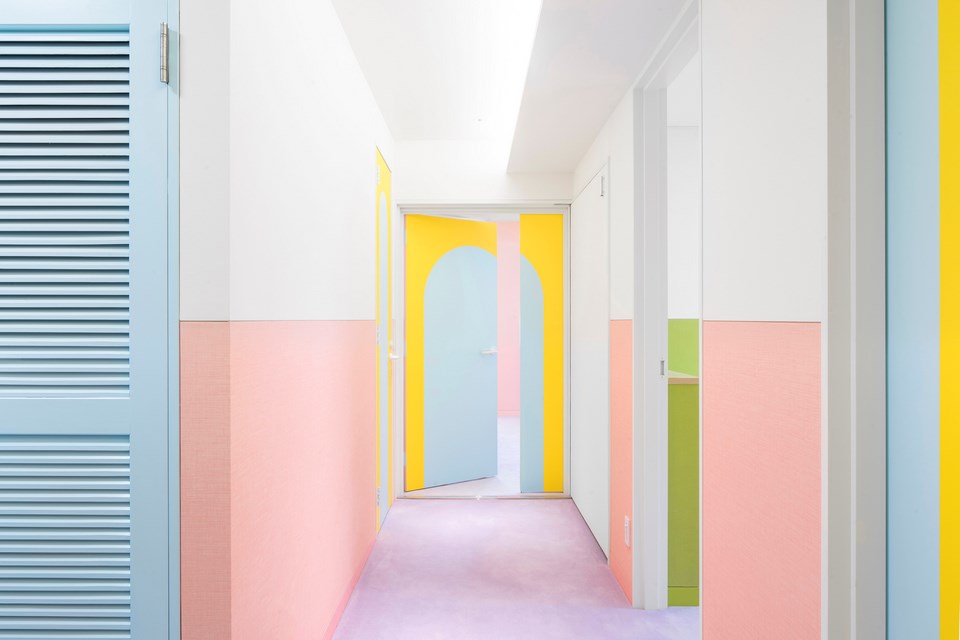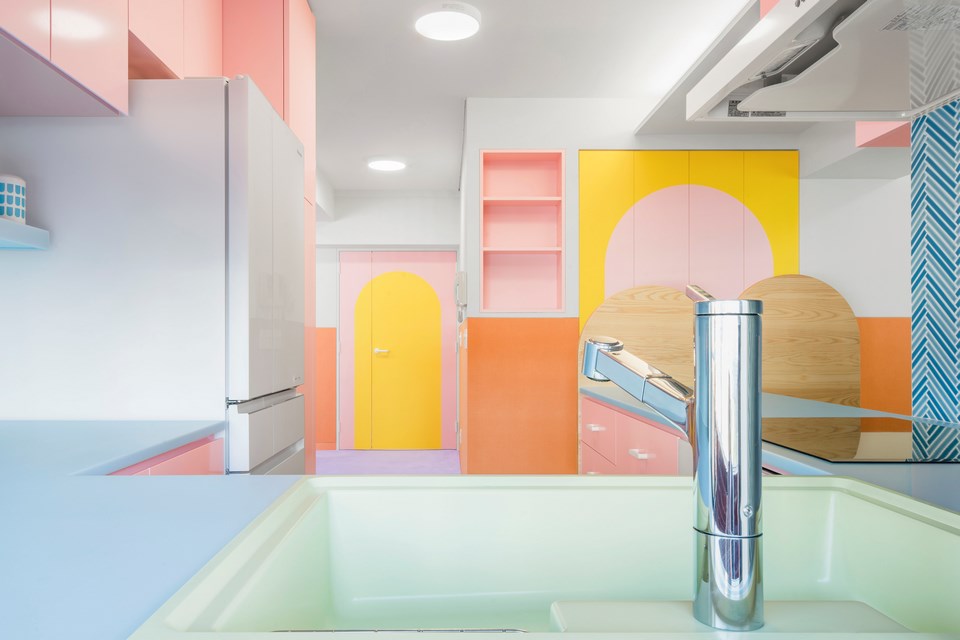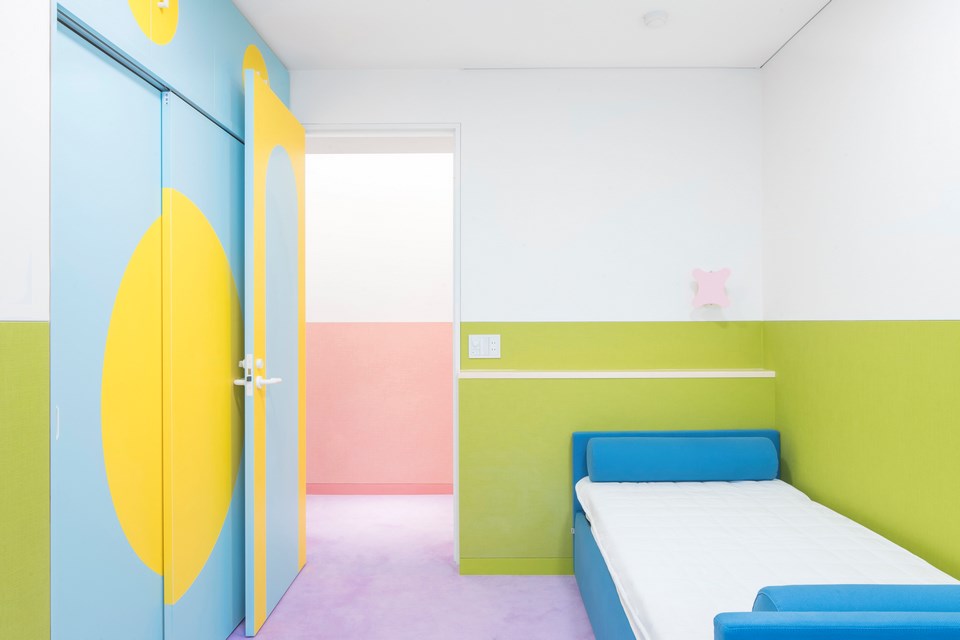Nagatacho by Adam Nathaniel Furman | World Design Awards 2020
Nathaniel Furman: Honorable Mention of World Design Awards 2020. Right in the heart of the governmental administrative district of central Tokyo there is a 160 square meter retreat of pure sensual delight, a small but intensely crafted manifesto for an architecture that luxuriates in a hyper-aestheticized celebration of the senses, and of every day domestic life. A palette of pastel colours, natural and artificial materials, and an open and interconnected layout with gathering at its heart, combine to create a voluptuous interior world of perfectly poised, gentle deviance. A combination of contemporary techniques and traditional craftmanship are used throughout, with wooden details and cabinetry made by hand by skilled carpenters, and the marquetry doors being fabricated using laser cutting technology. Materials are celebrated for their sensuality, and their effect on the imagination, rather than their origins, so translucent plastic artificial marbles sit next to the highest quality hand-finished spruce, which is in turn next to the highest quality hand-made porcelain handles, which in turn are next to beautifully glossy nylon fixtures, hand-made carpet next to vinyl, and exquisite textured wallpaper next to semi-matte plastic wall finishes.
The Nagatacho apartment is an experiment in the euphoric connoisseurship of colour, texture, material and form in the theatre of the quotidian, a space that elevates the client’s daily rituals and communal activities into a space of continuously seductive aesthetic delectation.
The previous layout was from when the building was built in the early 1980s, with a long corridor, multiple small rooms coming off of it, and extremely low ceilings, determined by the underside of the deepest beam. The windows were small, with deep external reveals, and were covered in heavy drapery. The new layout opens up the apartment completely, with a large central, multifunctional space that has a kitchen/counter/table/work & play area at its heart, which is imagined as a contemporary version of a hearth, around which most communal activities occur. The ceilings were raised everywhere to the level of the concrete beams and slab, which increased the height significantly in most places, but also created a complex roofscape, which is calmed by the datum line everywhere in the flat, above which all the various beams are covered in off-white textured wallpaper; with the eye concentrating on the colours below, the level changes in the ceiling do not catch one’s attention. The palette of cosy, but light and joyous colours, in combination with the larger open spaces and shear blinds, makes for a light-filled interior, and even the one, short hallway has been designed to be unusually wide, and has double-doors opening to the main living area, so that until privacy is required in the evening, that space becomes a part of the multi-functional central area.
This project is part of my ongoing investigations into the use of colour in architecture, and of Queer aesthetics in contemporary design. It is a realised manifesto for a new kind of sensuality in how we approach the construction of our domestic environments as places of exception, deviance, and expression, created in a manner that is a joy to live in. The apartment works perfectly as an unusually arranged, but functional home, and the intensity of its design, at all levels of detail, the obsession shown at all scales, is not only not oppressive, but it is light and joyful. It is a design that wears its complexity -and complex it is, do not make the age-old implicitly patriarchal mistake of dismissing this because it looks “fun”- as lightly as a dancer wears their training while in the midst of a performance.

Firm: Nathaniel Furman
Architect: Adam Nathaniel Furman
Category: Residential Interior Built
Project Location: Tokyo
Team: Adam Nathaniel Furman
Country: Japan
Photography ©Credit: Adam Nathaniel Furman
 “Adam’s designs are always approachable, usually adorable, often cheeky, and take inspiration from a passionate & lifelong exploration of the themes of Queerness, colour and ornament as a political-aesthetic project, with their objects, artwork, spaces & installations invariably being embodiments of the diasporic, fluid & roaming cultures that surrounded them as they grew up, and which continue to fascinate & inspire them to this day.”
“Adam’s designs are always approachable, usually adorable, often cheeky, and take inspiration from a passionate & lifelong exploration of the themes of Queerness, colour and ornament as a political-aesthetic project, with their objects, artwork, spaces & installations invariably being embodiments of the diasporic, fluid & roaming cultures that surrounded them as they grew up, and which continue to fascinate & inspire them to this day.”







